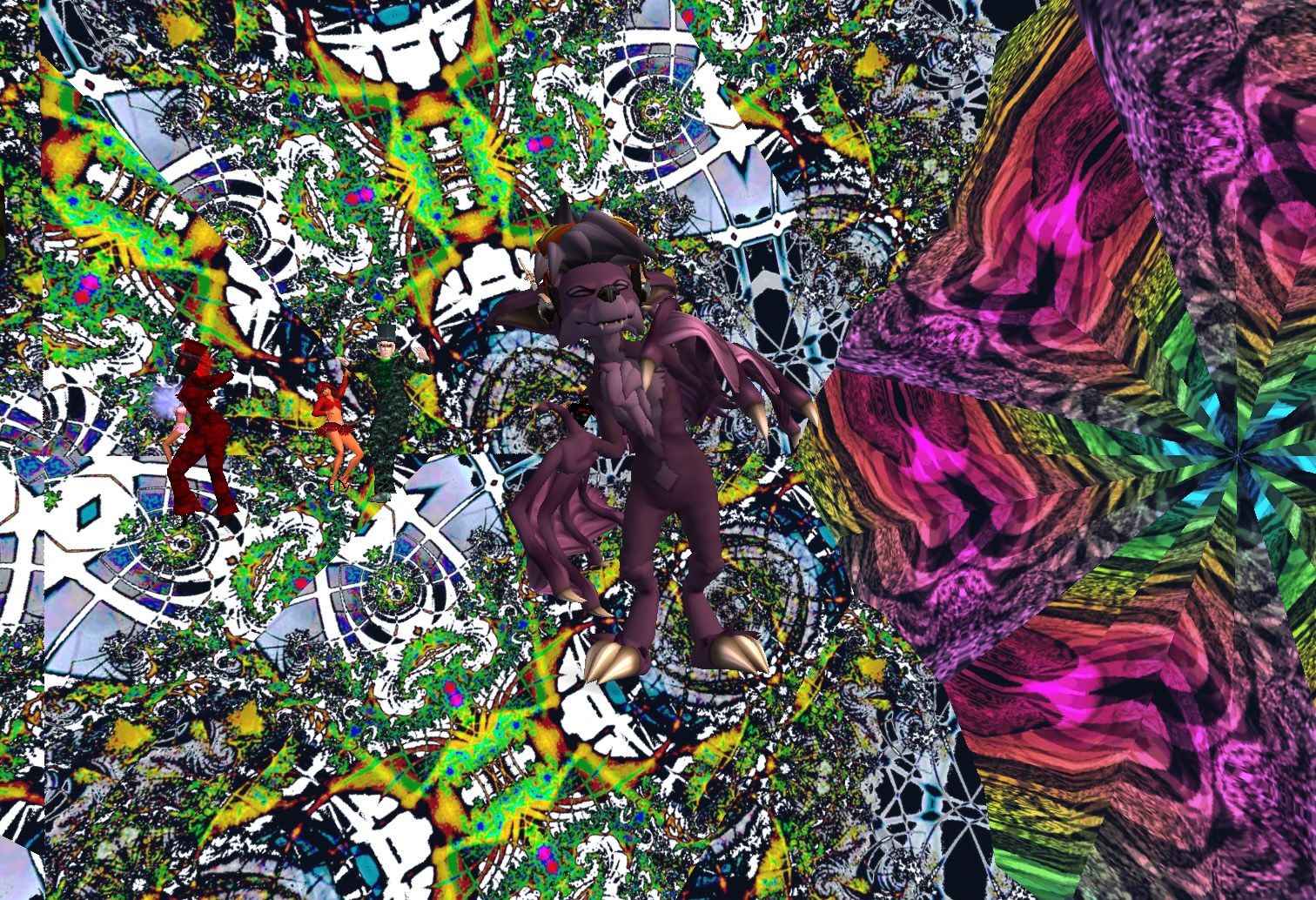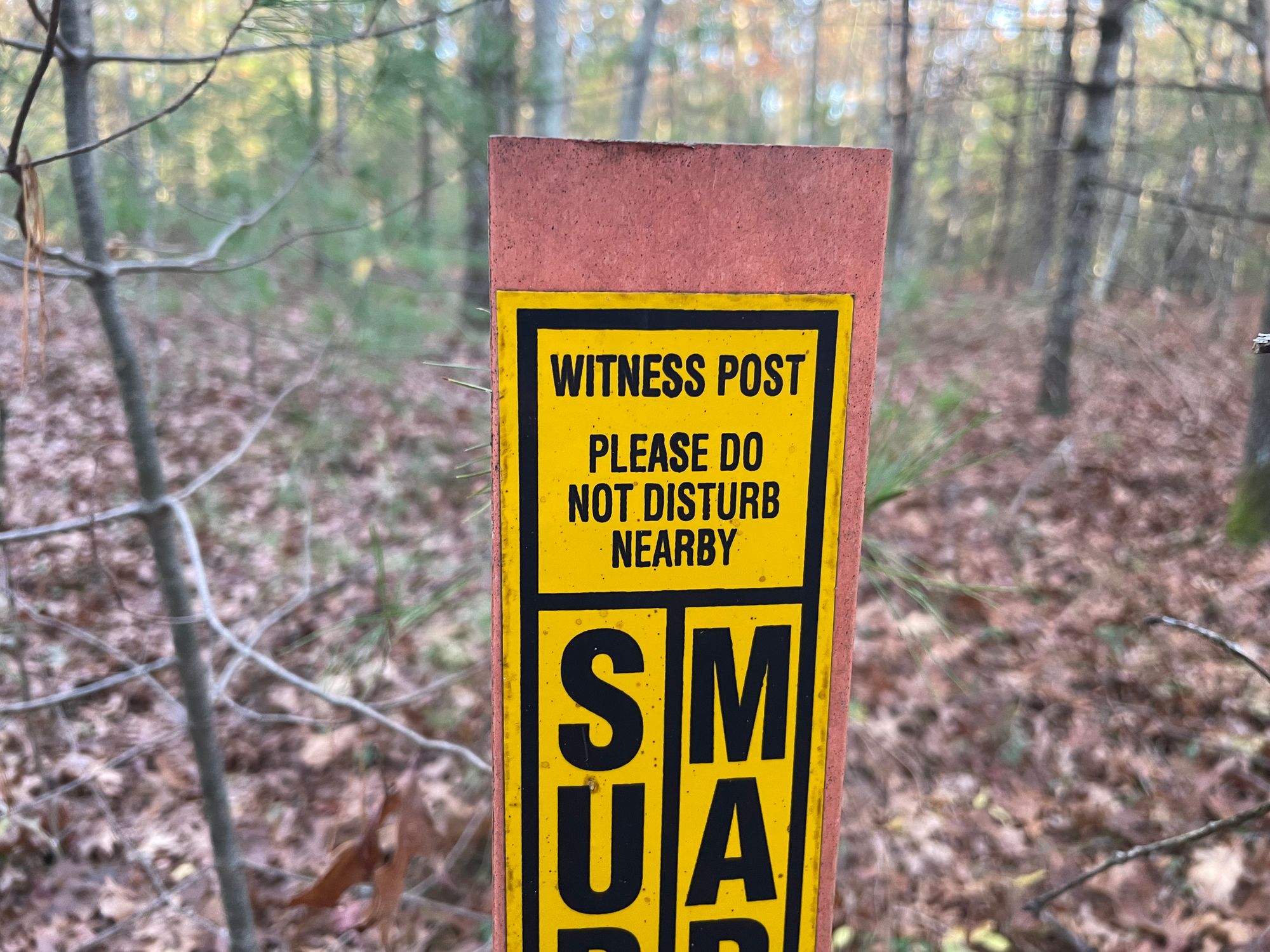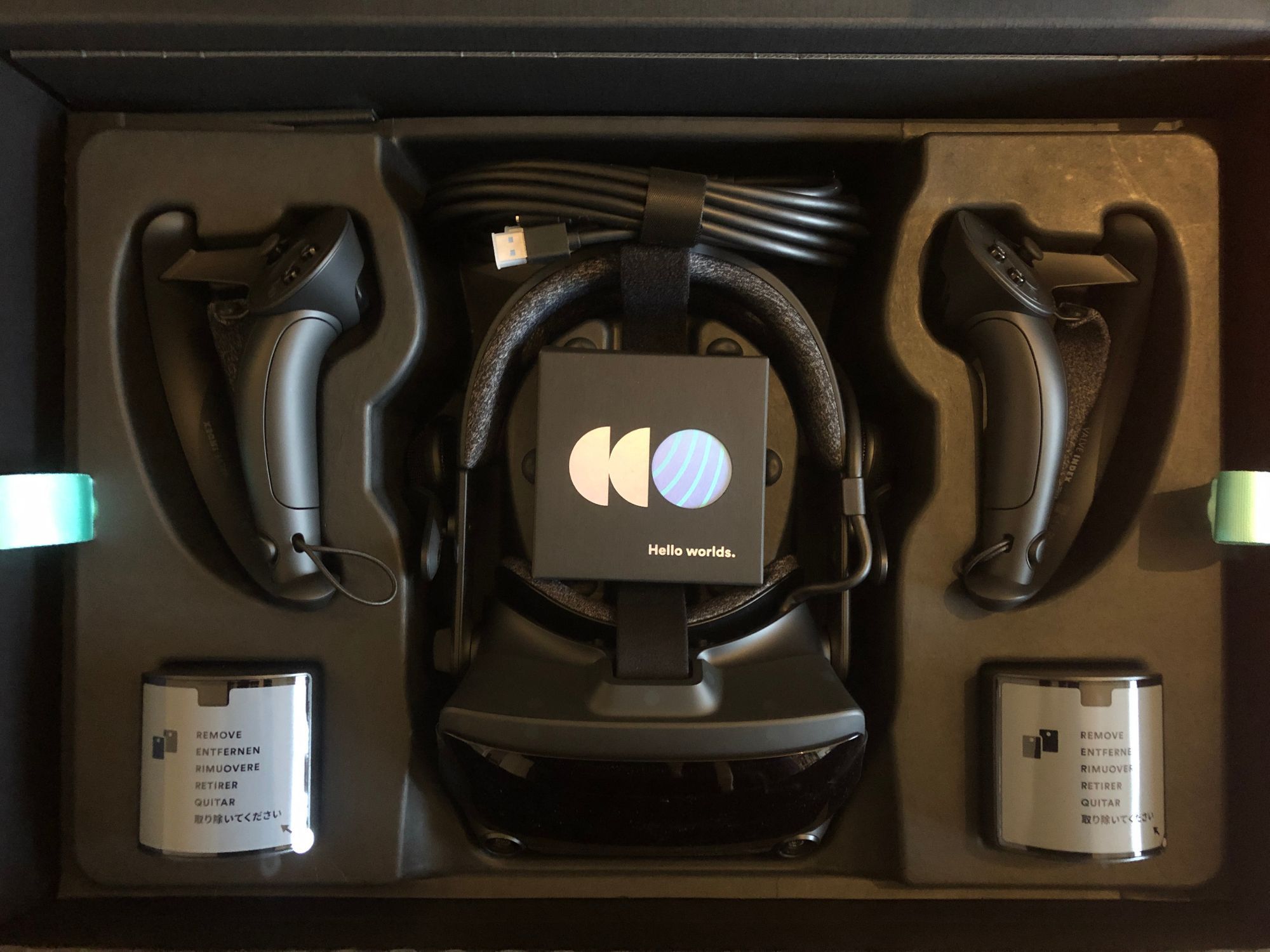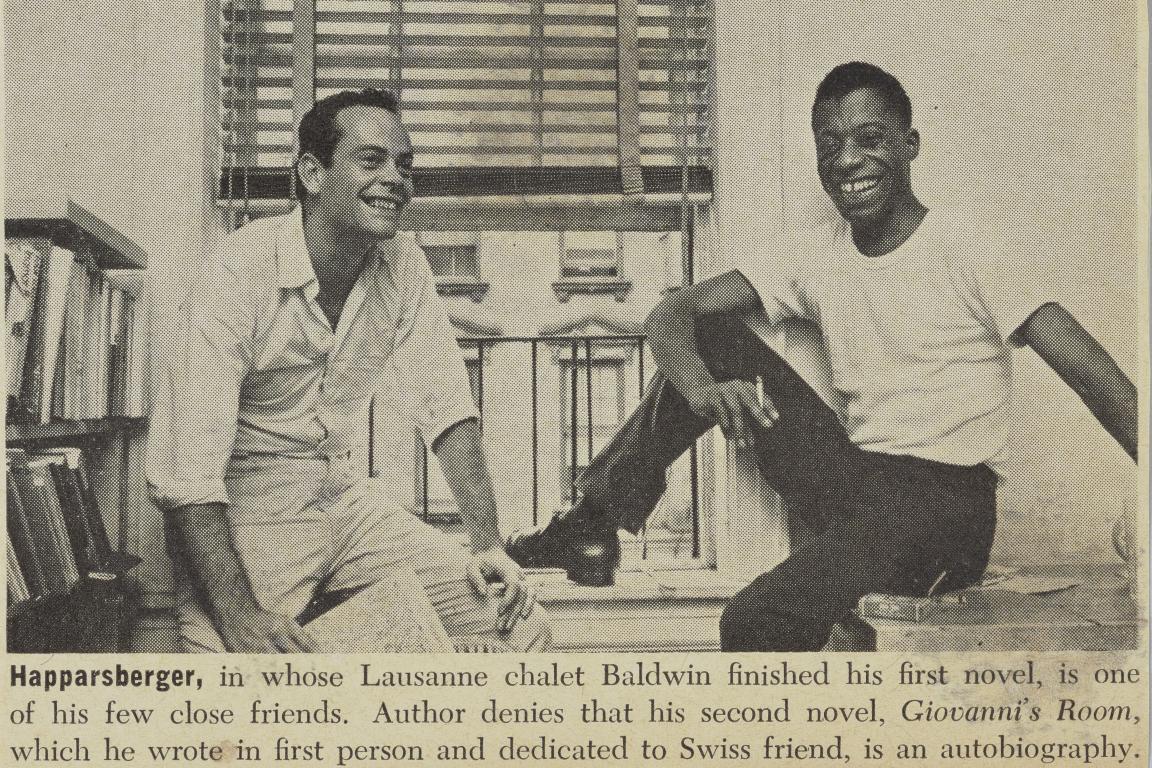
Part III: A Sinking Ship at the End of the World
While I was working at IBM on avatars for virtual meetings, my manager told me he'd only take Second Life seriously when it was impossible for avatars to have underwear.
Chapter two of the CYBERDECK project.
- Part I: VR Goes Where?
- Part II: Virtually Sleeping with No Body
- Part III: A Sinking Ship at the End of the World
- Part IV: Rated Arrrrgh: A VR Postscript
Fringe Elements
While I was working at IBM on avatars for virtual meetings, my manager told me he'd only take Second Life seriously when it was impossible for avatars to have underwear. The same manager proposed that that the only acceptable remote meeting was a high bandwidth audio and video chat, with a promise to show the attendees full expression, body language and degree of engagement: not because better fidelity conveyed more emotion to arrive at a better consensus, but simply because employers were owed the time they had paid for. An argument firmly in favor of the performance of attention, no matter real or fake. Most of us find ourselves here today, hot in the middle of a worldwide plague, forced into converting our homes to offices. The euphemism remote work tells on itself: emphasizing "the office" as the site of reality, as if these constrained spaces aren't the lesser part of every day?
Many of our organizations have transitioned fairly well, but some are largely incapable of understanding how to manage without the false performance of attention they're used to, and a solution emerges: techno-centric surveillance systems and reinvented time clocks. A kind of Fordism wrapped in a minimalist late 2000s design aesthetic of self improvement. As the story goes, it's utterly impossible to know if the people you hired share your mission, but at least you can track their heart-rate, eye movements and the precise number of seconds they spend staring at a screen, and this is what passes for labor.
I've always tried to argue that the most interesting uses of technology come from the edges: for better or worse, the people who look at a new development and apply it as a lever to the world in a way the creators never intended. The trouble is that looking at this from the outside can seem hopelessly self indulgent. It can be difficult to identify with outliers if you're not one of them, and there is often little introspection in these narratives, not much to say about broad applicability or ethics. Somewhere between this: the freaks hacking the planet and the suits selling us our own shadows, I hope we might find some idea of where to go.
In the 1995 film Synthetic Pleasures, the filmmakers take a snapshot of the early 90s soup of software, computer graphics, counterculture, body modification, drugs and techno-utopianism that gave us a whole slew of glossy magazines, the dotcom boom and the popularity of Burning Man. It's an entertaining film, the graphics and aesthetics as as equally strange now as when it came out, but today more likely to evoke retro vapourwave than the future. Ultimately though, the distance of time brings the edges of this vision into focus: This future is more We Live in Public than Whole-Earth. It is nice to see the film includes Orlan and Amanda Lepore, but most of the lengthy soundbites belong to straight white men, and the overwhelming view you get is anachronistically western-white-male gaze with more than a bit of an uncomfortable Asian fetish. In a film provocatively titled "Synthetic Pleasures" the most transgressive idea is that future VR might allow you to experience "the perspective of the biologically opposite gender." It is weird to see this vision fall so incredibly short of what people actually did online (even in 1995), but also instructive to see how the optimism of what we might do became twisted by what we could sell.
In the same film, famed psychonaut Timothy Leary (identified by chyron as a "cyberguru") opines on better living through chemistry:
"So the glorious victory of the 60s, we took the power away from [unintelligible] and even today with Prozac, it's no longer the psychiatrists that do it, it's the general practitioner, and that's gre.. and even the idea of self medication... sure... get a friendly doctor."
I'm hardly in favor of more pointless War-on-Drugs, but at the same time it's impossible not to see Leary's words in light of what did happen in the decade following: full-hearted capitalist exploitation of this "cyber idea" that our bodies can be programmed to our will, deregulation of the drug industry, popularization of chemical body modification into the mainstream. In 1997, the FDA changed its advertising guidelines to allow direct-to-consumer pharmaceutical marketing. Leary wasn't predicting mind-expanding acid trips or even ketamine for depression treatment, he was describing the origins of the opiate crisis.

Scale
A friend of mine who is currently working on a text about infrastructure pointed out that one of the best superpowers you can have in this particular era is the ability to mentally conceive how a process works at different scales simultaneously. On the internet, this is a survival skill which, when done professionally, we sometimes call UX design. What is the gap between what you thought your "product" was for and what people are actually doing with it? What does that NPS score not tell you?
The internet today operates at two radically different scales: on one hand, it's a space where individuals and groups on the fringes rehearse and develop the possibilities of technology and put this on display for their friends. On the other end of the spectrum, these ideas are capitalized on by corporations operating at massive scale. Much of what's in between falls apart. A 17 year old in her bedroom invents a website which is popular enough that it catches the eye of an incubator, which trims off the edges until the tool can, in the words of Dave Hickey, mean a whole lot less to a whole lot more people.
During my tenure at IBM, as I watched the research arm of the company which I was a part of shrink while others (notably the Watson supercomputer initiative) grow exponentially, I had a number of conversations with older managers who'd been there for decades. In one of the clearest of these exchanges, I heard something like the following: "Of course software and design is what they cut - There's little need for us to develop our own anything in these realms, because it's something you can do at home. IBM does best with Big Iron, huge server farms, massive super computers, manufacturing at scale - for software we just watch what people develop, let them assume the startup risk, and then we buy the results we think are interesting. For design we can just hire a design firm."
In the early days of Kickstarter, there were a number of projects which presented themselves in need of a few thousand dollars but, faced with the internet effect, found themselves flush with cash. The dopamine hit from the attention of "virality" encouraged a loop of "stretch goals:" project owners tacked on one more thing for one more stack of cash. Egged on by the platform itself, which makes money when you make money, we got a graveyard of projects. Each of these might have succeeded with the few thousand dollars they'd asked for, but were now saddled with a million dollars in cash and several times that in debt, in terms of the gap between what they promised to deliver their newfound public versus what was actually possible. A trip to the store for milk resulted in accidentally purchasing a whole damn dairy farm, along with a contract to hand deliver a signed bottle to every household in the entire United States.
I wrote then that nobody starts a local bakery in order to be acquired by Hostess. Kickstarter encourages people to act as if they can operate at the scale of a large corporation, but provides none of the awareness needed to operate this way. Many projects learned this: yes you can order a thousand units cheaply, yes you can order a billion cheaply, but that space in between is littered with bones. I often wonder how many projects Kickstarter actually ended up killing in the cradle.
The trouble with capitalism is that it only knows how to sing one song: the one with the most money is the winner and the winner is the best. Bedroom hackers who lucked their way into a fortune now believe they understand the hiring process. Companies run by inexperienced privileged college dropouts move-fast-and-break-things because they have no idea what they're doing, and this becomes a mantra. Small scale companies looking to pretend they are a growing concern "just copy Apple." Facebook announces that the performance of more than one identity is a sign of moral decrepitude, even as they sell your baby pictures to the demographic group tagged "white_pride."
All of this is to say: giving proper consideration to those who are pushing the edges of a technology seems self indulgent in part because it is, but also because capitalism would have you think so. The ideas on the edges are valuable because they're fragile, and dangerous, and don't scale. Engaging these first is key to helping prevent them from being weaponized by the profiteers of chaos. A fools errand perhaps, but the lumbering beasts whose feet we're dodging can only see at scale, and perhaps we can delay things just long enough to rewrite the future.
"This world would be fine, too, and possible, if art were nothing more than the production of sanctioned professionals, but it is more—and less, as well. It is a mode of social discourse, a participatory republic, an accumulation of small, fragile, social occasions that provide the binding agent of fugitive communities." -
And everybody knows that the Plague is coming
Everybody knows that it's moving fast
Everybody knows that the naked man and woman
Are just a shining artifact of the past
Everybody knows the scene is dead
But there's gonna be a meter on your bed
That will disclose
What everybody knows
CW: The rest of this includes a frank discussion of sex and sex toys. It's not erotic and I will not link to anything explicit, but you should probably consider the rest of this post NSFW. If it bothers you I'm covering sexy things, stay tuned for the next newsletter, when I'll write about math!
The Sinking Ship
I'm hanging out on the deck of a party yacht in VRC. There's a swimming pool, an all-you-can-eat sushi bar, and a stage with a microphone, where a friend of mine is belting Counting Crows songs at the top of his lungs. A sign at the entrance warned us the ship might sink. An empty ship in the middle of an ocean is already a bit haunted and the tension is killing me, I know we're all going down, and part of me just wants to get this over with. Another friend explores the below-deck and eventually locates a button in the engine room labeled "HAVE YOU SEEN TITANIC?" An iceberg appears on the horizon. I can see this from the foredeck of our doomed three-hour-tour where I'm chatting with qDot, the mad genius behind a small company called Nonpolynomial, whose tagline is "We like working on problems for people who need to develop tactile contact via systems that don’t ordinarily facilitate tactility."
Nonpolynomial’s most well-known contribution to the internet is buttplug.io: "an open-source standards and software project for controlling intimate hardware, including sex toys, electrostim hardware, and more." qDot is a bay-area technologist, he worked for several years at Linden Labs (creators of Second Life) and was part of the team that helped open-source as much of that platform as possible. He personally sinks hours into creating tools that allow software integration with haptics (vibrating and moving toys with bluetooth radios, such as those sold by Lovense). We’ve been twitter friends for ages, but I hadn’t come across his work in the wild until I landed on VRC. qDot also tells me "Arctic Fox" is listed as an endorsed skill on his Linkedin profile.

A pause here: what I had planned to tell you here was the story of how the foundational technology needed to support the haptic work that Nonpolynomial does should be impossible here in VRC. As aggressively as the company patrols the borders of propriety, it should be impossible by policy, but also it’s technically impossible. Not only can virtual avatars not touch, but the underlying software necessary to make them seem as if they touch (colliders and collision detection in the video game parlance) simply don't exist.
The interactive dynamic bones system I mentioned in Part I, that modification that allowed my tour-guide to brush his hair back, clothes and accessories and body parts like breasts and butts to move realistically? These don’t respond to the touch of others, except if you install an “illegal” software mod. Avatars are not interactive in VRC, and are designed that way. What I’ve learned in the six months since I’ve been here is that, unlike sexual interactions in most online worlds that are primarily text based, sex in VR is about exactly this forbidden physicality and proximity, in a way that is both like and completely unlike the real world. In the case of fairly complicated physical interaction, such as sexual penetration, the user-built system makes use of a brilliant hack: an abuse of 3D shaders and the Unity point- lighting system.

The fundamental building blocks for touch-interaction in VRC have been deliberately broken by the platform and yet the demand is strong enough that residents will go to extraordinary and creative lengths to re-enable them. This alone is a fascinating story, an end-run around the desires of a host company by the desire of its users, but it is still very much unfolding. As of last week, for instance, VRC announced they are working on an official multiplayer dynamic bone system and halfheartedly walked back a number of high-profile bans known by users as the “Mod-pocalypse,” but for now I realized there's something else I'd rather talk about, which maybe explains why I’m writing about internet sex at all.
I imagine that there are many private groups on the internet dedicated to erotic content, and curiosity alone accounts for a number of users, but it still surprises me that one of the groups I’m now aware of, surely NSFW but dedicated to the technical aspects of haptics for furry avatars alone, has more than 500 members. What is compelling a size-able number of skilled people, completely off the radar, to engage in the most elaborate, expensive and technologically complicated sex possible? What is going on here: why so many hours of unpaid labor to combine disparate technologies in order to do something potentially embarrassing and against the rules, without a clear financial motive? There’s eros of course, and high-nerdery, and kink, and a thousand personal reasons, but it’s just difficult to avoid how good the production value is, how active the community is, as well as the sheer range of technical skill on display. This is not “low budget:” The time and effort spent in hand-crafting an entire universe - elaborate avatars, costumes and lights and props, everything from scenography to character design to embedded microcontroller programming to 3D modeling to network architecture - this feels like a much bigger project than getting-off - and I suspect the stakes are higher than they seem.
I listen in on an online discussion in a group specifically for those interested in using bluetooth enabled toys in VRC: "Is it required to pair an insertable toy with a penetrator?" No... you can connect anything to anything. My girlfriend and I both use a dildo, but you could map them to whatever parts you have, or even more people if you wanted."
A vibrator isn't a body part, and it doesn't feel the same, it doesn't work the same, for starters you can design this: you can choose what the toy looks and feels like, you can choose what you “map” to what. You can control the sensation, and you can orchestrate how many people you have an encounter with (or not). You can decide how much physical distance is between you and your partner, you can program how much distance it feels like in VR. Arguably many of these things should also be possible in real life, but this isn't about trying to replicate a real-life experience - this is about reimagining what sex even is, in the context of a much larger conversation about what the world is. The goal here isn't to replicate a common activity in an environment inherently ill suited for it, but to push past that and redefine the boundaries entirely.
VR intimacy isn't mimicry of a real experience, any more than online relationships are a mimicry of real relationships any more than working at home is less real than working in an office. Rather, these are all something entirely new, including here the invitation to reimagine what a body might be and what it might do. I'm thinking through this when qDot casually mentions ear-haptics.
"Ear haptics? Wait like... your ears buzz?"
I confess I initially imagined the most boring thing: a dumb joke about ear sex. And maybe there is a kink component, but this is more adorable:
"Yeah, exactly... I want to know when someone is rubbing my ears. Also, there are motors for headpats. The game doesn't really provide for these things, but we have these needs, so we invent the solutions. I'm also working on tail haptics."
In a reimagined body: ear rubs as a greeting. In a world where you cannot feel anything, visual interactions still hold the most weight. I have legs in VRC, which is pretty cool, but I cannot feel an avatar touching my foot or touching any part not in my direct field of vision, and this is strange in a world that otherwise does a fairly decent job of supporting natural language interactions. What I can "feel," even without haptics, is a touch to my face. This, then, becomes the particular site for intimacy, and is also a bit of a VRC meme.

Later qDot will send me a draft of a chapter he wrote for an academic text, and from this I'll order a copy of John McArthur’s Digital Proxemics: How Technology Shapes the Ways We Move. I’ll remember then I actually cited some of McArthur’s early work in some designs I did at IBM on peripheral displays - it’s a useful model for the type of interactions we imagine and feel comfortable with based on how close we are to the display (or person) we are interacting with.
“Imagine if we could just clip into each other’s bodies in real life the way we can here”, a friend muses one evening, “Like, public transport could be so much more efficient….”
In any case, I understand the ears - I have two - but I'm not sure I actually have a tail beyond the vestigial bone I painfully bruised once.
"Ok wait... tail how?" (I'm still thinking entirely un-creatively about this)
"So you know what a TENS unit is?"
Electrical pads that directly stimulate your nerves. Usually used for physical therapy or a pain treatment, sometimes also by the BDSM community for play.
"Well, I think we can rig that up at the base of your spine so you can feel as if you have a tail."
This line ultimately leads me to a group specializing in the discussion of technology for creating and performing extra limbs in VR: not missing limbs, not the highly problematic but unfortunately common discourse you find around VR with respect to "restoring" "broken" human bodies to "give back" motion to humans without the standard two arms and legs, but wholly new limbs. These are residents of the virtual community who prefer their bodies to have multiple heads, tails, tentacles, or taur shape: quadruped four-leggers with two arms up top. Not satisfied with merely performing this shape, they want to feel it. They're going to build it. Not in the future, but right now, with code and parts you can order online.
The ship is sinking. We've moved to the rear as the deck lists, and a ghostly rowboat cruises alongside, the lone occupant playing "My Heart Will Go On" (shittyflute version.)
"Who is using your tech?" I ask qDot, "I mean, besides the furry community? Were they the first really big spike you saw?"
"Well yeah, the VRC community in general is the biggest. There are also adult film producers who regularly use it like a subtitle system - they'll encode things in the subtitle track of a porn film so you can "feel" what you see on screen with your toy - but VRC people are the first ones to use this setup every day, for like, 8 hours at a time."
For sex, yes, but not only, not by a long shot. This is for reconfiguring bodies, for immersion far beyond the bounds of what Facebook will sell you. For spending 8 hours a day or more in virtual worlds, for stimulating nerves directly with electricity, for social connection. For joy. For touch. For imagining and experiencing futures a whole lot further from who is paying attention in the Zoom call. You don't need to want to do any of these things to wonder what it means when we have a way to control the shape we’re in, to wonder how we might navigate these new social structures and ask who gets to control the limits of the dials we turn. As it turns out, we don't really need to wonder at all.

The lights flicker and go out, the music stops. The ship groans and settles. It's funny, and fake, but also a little scary and unsettling. I notice nobody is really talking, and everyone is crowded a bit by the back railing. Someone makes a half hearted joke about this being the end. Nobody laughs. One by one, we silently fall off the deck and into the dark water.
I fall into the ocean and drift downward. I think I'm holding my breath and I swear I feel cold when I hit the surface, which is silly I guess. I’m curious what the creators of the world have in store and I hope it's more interesting than lights-out. I'm not disappointed: I end up teleported to a deserted island, rejoining a friend who "drowned" a few minutes before.
There's a view of the sinking ship in the distance where we can still see a few people crowded on the deck, and we sit together and chat around a cheerful campfire, one by one rejoined by the members of our party. I have no idea where all of this will end up once the dust settles, but I want to believe that in the chaos we'll be able to carve out spaces like this for each other: pleasant temporary islands where we can rest among the sinking party-ships. Conversations and connections that happen between, alongside and around the crumbling infrastructure. Campfires among the ruins. Self indulgent, sure, but pointing in a direction where we build a world collectively, in our own vision, in spite of the terms of service, however peculiar that vision might be. And also: I think I’d like to try the ear-haptics.
Continued in Rated Arrrgh: A VR Postscript
Did you enjoy reading this? Please share it! If you found it particularly helpful or interesting, I'd love a cup of coffee ☕ 💜



















